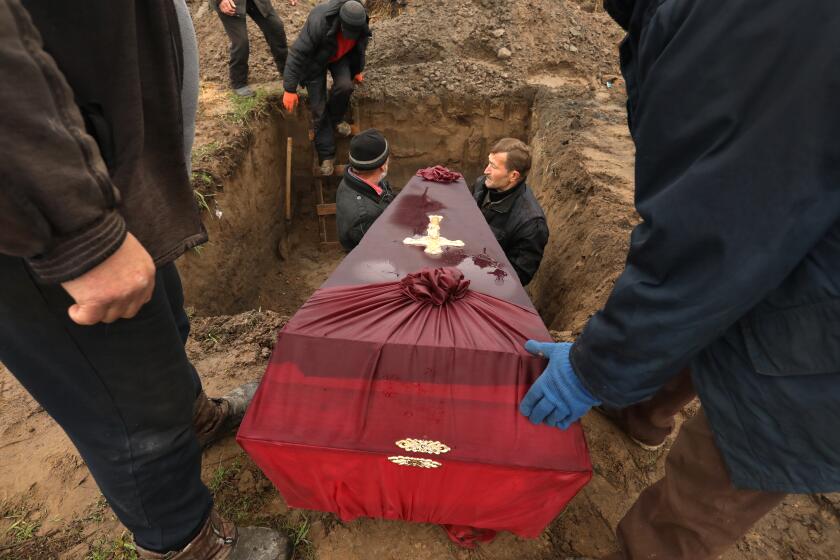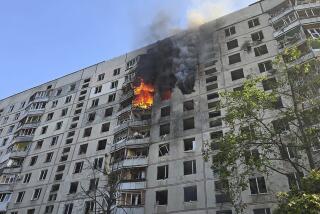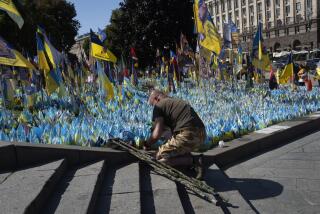
- Share via
ODESA, Ukraine — In the sinewy 41-year-old ballet dancer’s telling, it wasn’t really such a grand jeté to exit the stage of an iconic opera house and enlist in the Ukrainian army.
When Russian troops rolled into Ukraine more than five months ago, Vitaliy R., a longtime member of the corps de ballet at the Opera Theater in the Black Sea city of Odesa, didn’t even wait for the mobilization call to come.
“We didn’t start this war,” said Vitaliy, who is forbidden by military rules to make his full name public. “But we will win it.”
Odesa — onetime Russian imperial outpost, coveted strategic seaport, a quirky multicultural melange redolent of salt air and tragic history — has always paired an artistic soul with a martial bearing.
As the war grinds on, both are on full display.
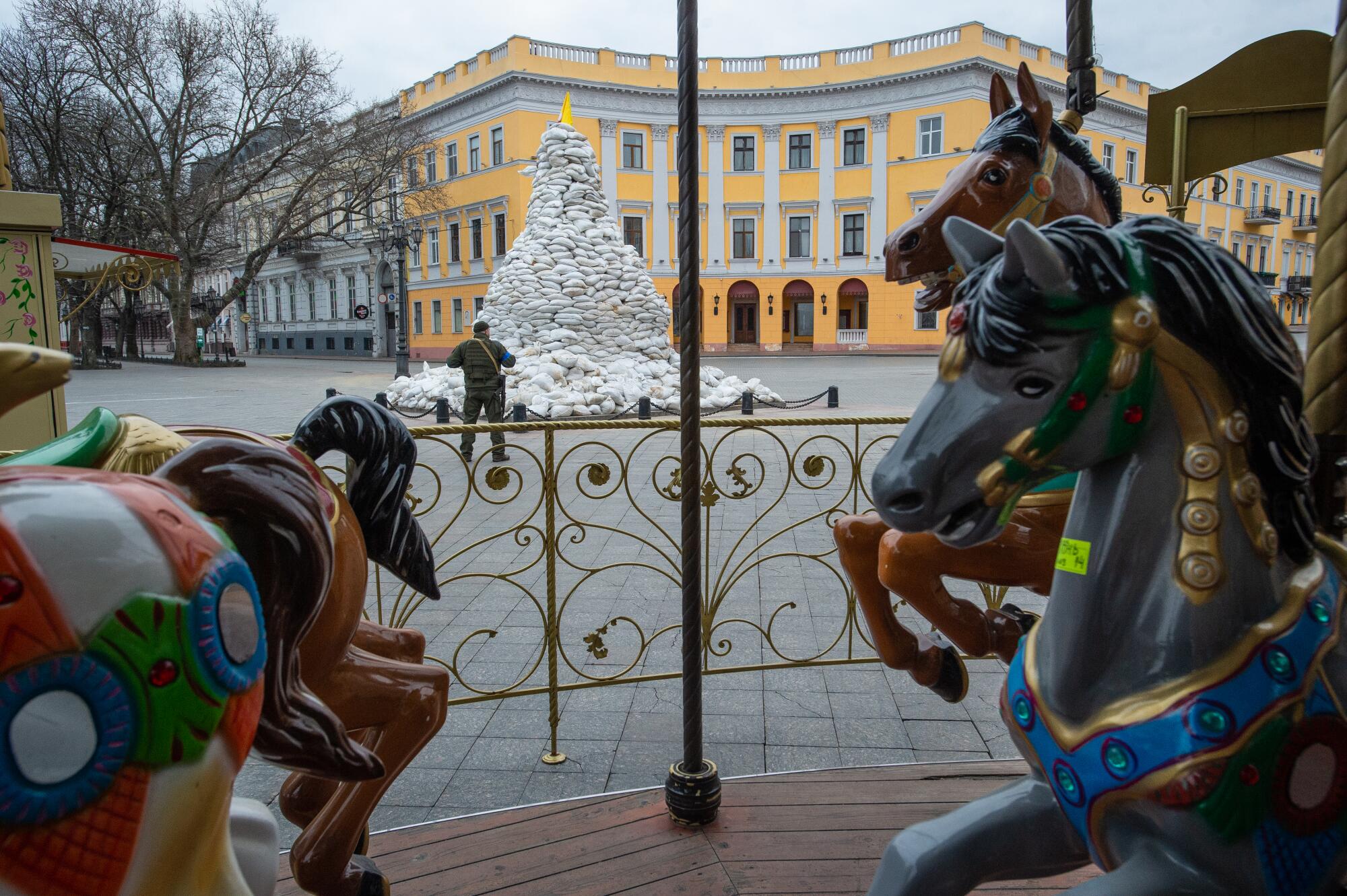
The Potemkin Stairs — famed for the tumbling-baby-carriage scene in Sergei Eisenstein’s 1925 silent film classic “Battleship Potemkin” — are sealed off by tank traps and checkpoints. The seashore is mined. Giant cranes sit mostly idle at Odesa’s harbor, Ukraine’s principal seaport, which was hit a little more than a week ago by Russian rockets. The front-line city of Mykolaiv, suffering near-daily Russian bombardment, is just 70 miles distant.
The people of Odesa — its spelling now altered to drop the Russian double “s” — have confronted undulating threat levels throughout the war. Early on, the city braced for a potential Russian amphibious attack, shoring up defenses, sandbagging pastel-colored buildings, blocking off key approaches with antitank “hedgehogs” fashioned from steel beams.
In Ukraine, rooting out those who aid Russia is a tangled, painful process. Hundreds of collaboration cases are being scrutinized.
But Russia’s formidable Black Sea fleet proved less than invincible. Less than eight weeks into the fighting, Ukrainian forces sank the flagship Moskva with shore-to-ship missiles. Russian troops were subsequently forced to abandon Snake Island, an outcropping of Ukrainian territory 85 miles from Odesa, a key base for electronic-warfare and air-defense systems.
Still, the city remains menaced by Russian ships and submarines. Odesa residents were rattled when intelligence reports in late spring indicated Moscow hoped to carve out a land bridge from the Crimean peninsula, seized by Russia in 2014, to the breakaway region of Transnistria in neighboring Moldova. Odesa would lie squarely in that path.
“The intensity of missile strikes on our city and entire oblast [region] has increased,” Serhiy Bratchuk, spokesman for the Odesa regional military administration, said during an online briefing last week. Russia, he said, “is pounding civilian infrastructure and civilian homes. It is trying to intimidate the peaceful population by killing civilians.”
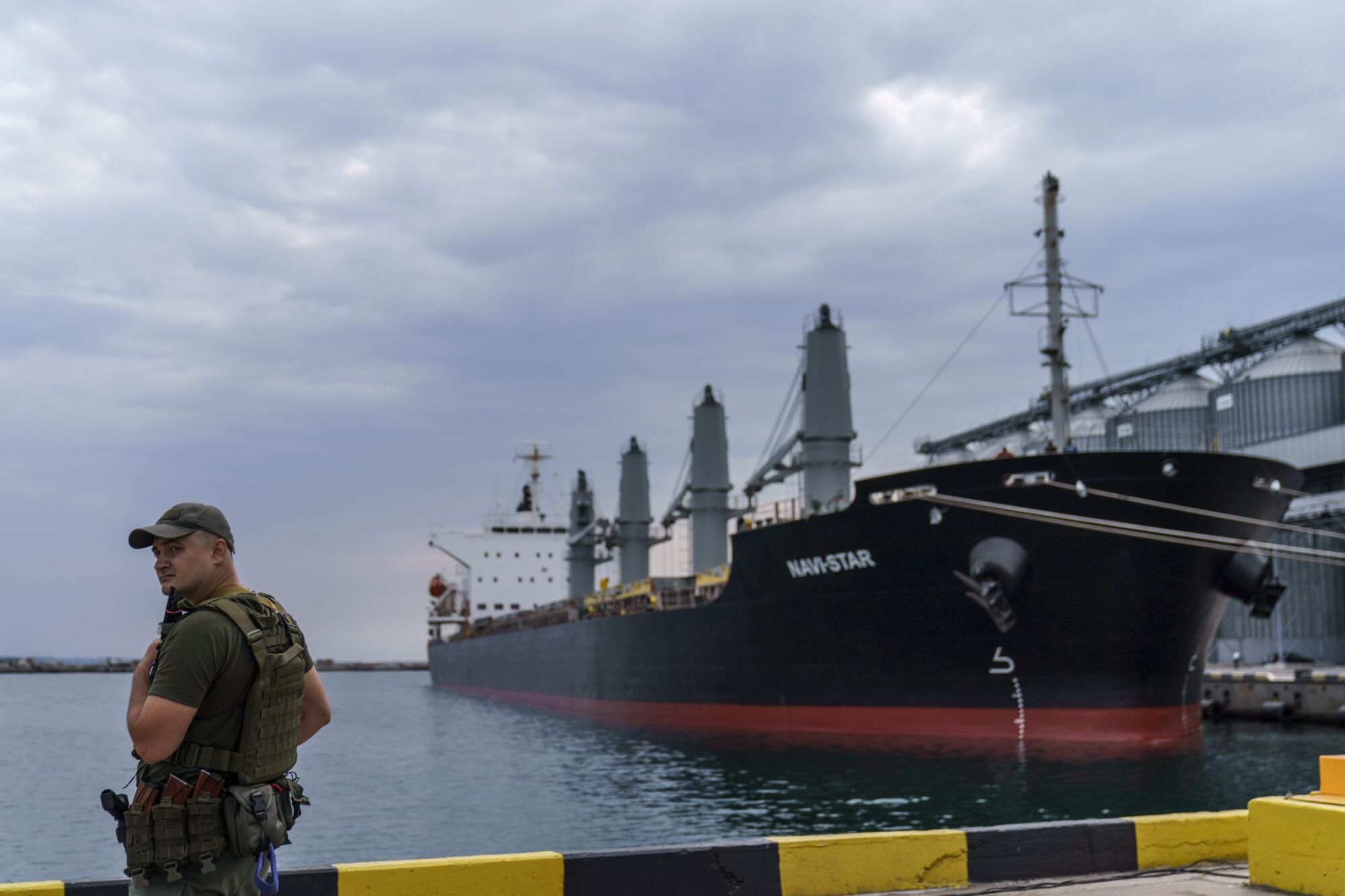
The city’s lifeblood, its commercial port traffic, was frozen for months until Monday, when a ship laden with grain finally sailed from Odesa under an accord brokered by the United Nations and Turkey. The July 23 strike on the port, which came only a day after the deal was announced, sent billows of oil-black smoke rising into the blue sky, the dual blasts reverberating through the historic city center.
Characteristically, some beachgoers and dogwalkers let out raucous cheers as Ukrainian air defenses brought down two of the four Russian missiles.
The churn of war has spurred an estimated one-third of Odesa’s residents — numbering about 1 million before the war — to seek safety outside Ukraine, but at the same time flooded the city with internally displaced Ukrainians from occupied parts of the south, including Kherson, a 125-mile drive away. Captured in the war’s earliest days, Kherson was the first major city to fall to Russia, and Ukraine’s military is making preparations for what would likely be a bloody battle to regain it.
Ukraine’s first lady has emerged from her seclusion at the start of Russia’s invasion to lay the bloody images of the war’s child victims directly before U.S. lawmakers
Many cities in this part of the world suffered hideous violence during World War II, and Odesa was no exception. The city was besieged and occupied; Nazis killed about 80% of the region’s more than 200,000 Jews. The Russian invasion has prompted an estimated 15,000 of Odesa’s current roughly 40,000-member Jewish community to head into temporary or permanent exile.
In this war, Odesa has been largely spared the punishing Russian bombardment that has flattened cities like Mariupol, another key southern seaport that fell to Russia in May, or cities along what has been the war’s main battlefront, a crescent-shaped front line in the country’s east. But deadly strikes, when they do occur, send ripples of grief through a sprawling metropolis that in some respects retains a village-like atmosphere.
A beloved local coach and soccer club founder, 42-year-old Oleksandr Shyshkov, died in a July 1 rocket attack on a residential area in Serhiivka, which killed at least 20 other people, including a pregnant woman. An Odesa resident, Shyshkov had traveled to the town about 40 miles away to be ready for the early start of a youth sporting event that was to be held the next morning.
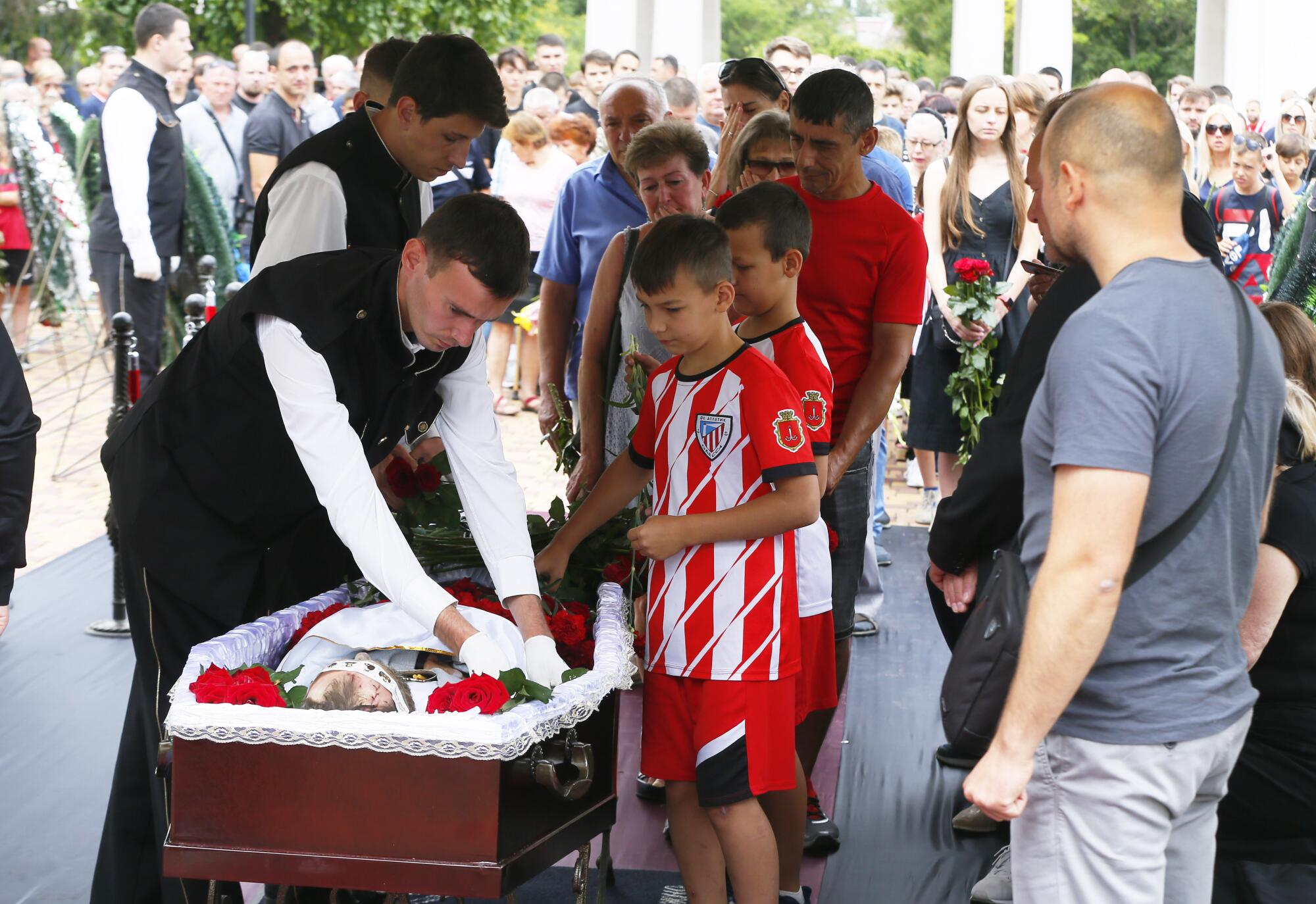
His body was pulled from the rubble at nightfall, hours after the predawn strike.
“The kids, they couldn’t fathom why such a thing would happen to him,” said Vladimir Balyk, 45, a co-founder of the club, gesturing toward the 10-year-olds on the soccer pitch behind him. “Neither could we.”
Despite Odesa’s Russian-infused history — including its formal founding as a free port by Catherine II, the empress known to Russians as Catherine the Great — most local people have been thoroughly disabused of any notion that Russian President Vladimir Putin would spare the city because of common cultural heritage.
In a square in central Odesa, an old woman crossed herself as an ambulance caravan passed by, carrying dead soldiers. Then she roundly cursed Putin — in Russian.
In the hazy days of midsummer, with streets and squares strewn with fallen drifts of tiny white acacia blossoms, the war has transformed daily habits and routines. A local joke has it that the sea is now like a museum piece: Look, but don’t touch.
But as with much of Odesa’s trademark sardonic humor, there’s a bleak undercurrent. In July, two swimmers were killed in separate incidents when they accidentally set off mines in waters near the city that were signposted as dangerous, authorities said.
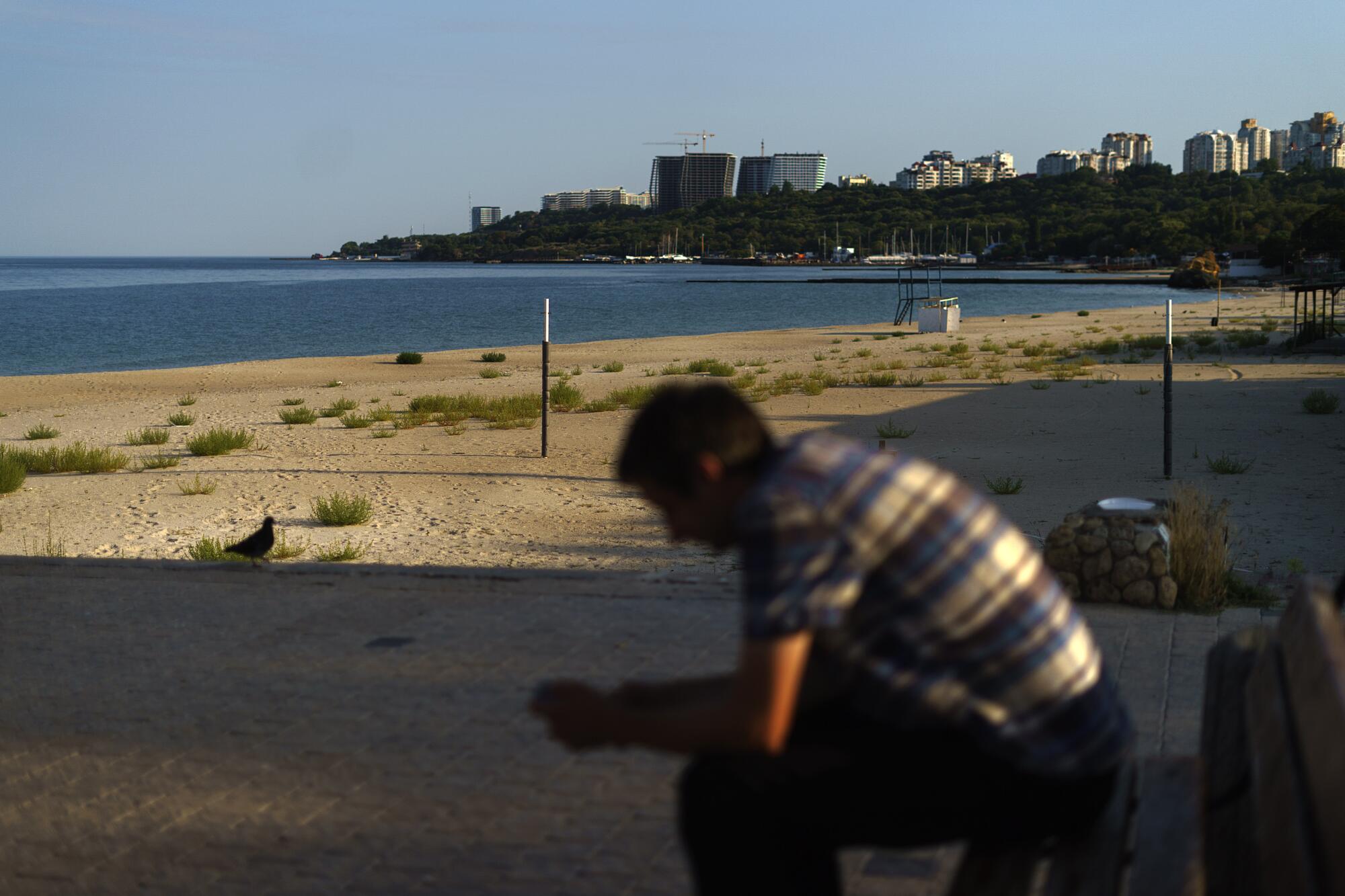
Olga Katasonova, 53, still walks her dog to the seafront every morning, eyeing from a distance the beach that is now inaccessible.
“I miss it, of course, but this is nothing compared to what people experienced in Kharkiv, in Mariupol,” she said, listing the names of war-ravaged eastern cities. “Nowhere in Ukraine is safe, but we are so much luckier than many.”
On a brief evening break from tactical training at a military base on the city’s outskirts, dancer Vitaliy R. said he expected to deploy to the front at some point. His wife and two young sons are worried, he said; so is he.
“You’d have to be stupid not to be scared!” he said.
Clad in a gray T-shirt and blue gym shorts, he echoed, seemingly unconsciously, his straight-backed dancer’s posture: hand on hip, palm facing outward. His last stage appearance was four days before Russia invaded Ukraine on Feb. 24; the neo-Baroque 19th century opera house, which stands majestically on a raised plateau in the historic center, in June resumed performances, suspended until then by the conflict.
Army life is very different from the opera-house milieu, Vitaliy said, but there are certain similarities between his previous calling and his current one. Both require discipline. Each involves acquiring new skills and practicing them endlessly. Most of all, he said, there is a sense of being part of something larger than oneself.
Start your day right
Sign up for Essential California for the L.A. Times biggest news, features and recommendations in your inbox six days a week.
You may occasionally receive promotional content from the Los Angeles Times.
“I miss my life from before — the stage, the audience,” he said. “But this is important for everyone.”
Oleksandr Babich, a local historian who wrote a book about the 1941-43 Nazi occupation, now devotes his days to gathering and transporting donated supplies to Ukrainian military encampments elsewhere in the south.
The city’s hallmark, he said, has always been its resilience, and he doesn’t expect this war to change that.
“Odesa survives,” Babich said. “When all this ends, we will still be here.”
More to Read
Sign up for Essential California
The most important California stories and recommendations in your inbox every morning.
You may occasionally receive promotional content from the Los Angeles Times.
